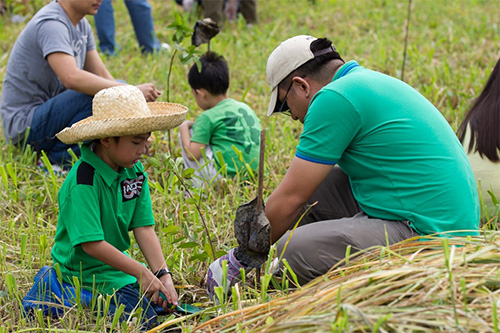Tree planting is a great event for companies and organizations; it is also a good activity for families. Despite how they look, such events are not easy to organize. There is a lot of work that goes into making these seemingly trivial events successful, and very few people realize this. If you want your tree planting activity in the Philippines to go smoothly, then here are some steps you can follow.

Steps In Planning A Successful Tree Planting Activity
Before Anything Else, Plan Thoroughly
The most crucial and probably the most difficult step in making your tree planting event successful is planning. You see, in order to make such a huge event seem like it was nothing major (because it went so smoothly), you have to be able to consider everything, even the smallest details like the distance between assembly point and the actual tree-planting site, or perhaps the steepest slope that the participants will have to climb on their way to the digging area. These may sound trivial but they will be causing inconveniences for the participants especially to invited guests that are not so young and agile.
In a nutshell, planning should encompass tasks, dates and details before, during, and after the event itself. Among the many details that you need to pay closer attention to would be the following:
Date of the Event
There are times of the year when saplings are more vulnerable to the elements depending on your location. Since you don’t want to waste effort and resources in planting saplings that will eventually be drowned by rain or desiccated by intense heat, you need to consider which time of the year is most suited for the type of sapling you’re planting.
Location
Ideal locations for tree planting in the Philippines are those that are in or near protected forests. In these areas, the saplings will have better chances of surviving not only because of the additional protection from the authority, but also because these areas are proven to have adequate nutrients for supporting plant life. Just make sure though, that the saplings are planted near the edge of the forest or in a region where abundant sunlight is available.
In addition to this, the location has to suit the participants’ physical capabilities. This simply means that the participants should have no problem reaching or climbing the location for the planting.
Participants

Ideal locations for tree planting in the Philippines are those that are in or near protected forests. In these areas, the saplings will have better chances of surviving not only because of the additional protection from the authority, but also because these areas are proven to have adequate nutrients for supporting plant life. Just make sure though, that the saplings are planted near the edge of the forest or in a region where abundant sunlight is available.
In addition to this, the location has to suit the participants’ physical capabilities. This simply means that the participants should have no problem reaching or climbing the location for the planting.
Consult Ecology Experts
Contrary to what most people think, you cannot randomly choose a sapling for planting. Each species has a distinct set of requirements and each environment can only support a number of species at a time. If you incorrectly introduce a species of plant in an area without consulting the experts, your sapling can either die because it’s not suited to the environment where it was planted, or your sapling can end up disturbing the balance of the whole ecosystem in the area.
New species can out-compete the present local populations or affect existing predator-prey relationships. Either way, it can throw off the balance in the ecosystem and have a negative impact on the area, instead of replenishing the plant population.
Coordinate with Commercial or Government Organizations
No matter how good you are at planning or execution, you cannot do a major event like tree planting alone. Seek the help of other commercial or government organizations for aid. This can be an opportunity to get some sponsorship in exchange for free advertising.
For example, partnering up with a popular food brand can get you some refreshments during the event. In return, all you need to do is to mention their aid in the tree planting event to give them their brand an extra mileage. It’s a win-win situation.
Explain the Cause
In order to make a more lasting impact on the participants, provide them a teaser by giving them a background of the place you’re trying to replant way before the actual event. Emphasize the significance of tree planting, particularly in the area you have chosen, and the participants’ significant contribution to the cause. This should make the people feel more relevant. At the same time, it drums up the anticipation and strengthens their commitment to the event.
Also, when you do give teasers or after explaining the cause, you might want to include a little demo or orientation on how to plant saplings properly. This should lessen the mistakes in the actual event, and mentally prepare them for the act itself.
Provide Updates on the Saplings’ Development

Not every tree planting event offers to give updates on the planted saplings. You can choose yours to have such an extra to make it more memorable. By doing so, you gain the trust and appreciation of the participants. Not to mention, this is the greatest measure of success for your tree planting activity.
One of the best sites for a tree planting activity in the Philippines is Nuvali in Laguna. Nuvalis TREE or Together Reforesting the Earth’s Environment Program is one of the Community Programs at Nuvali. It provides an excellent option for those who are planning to have a tree planting activity. Choose from three packages depending on how many trees you want to plant.

